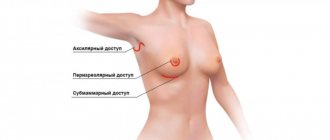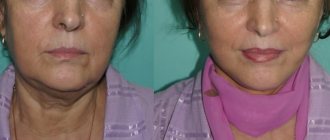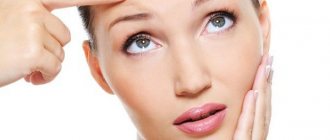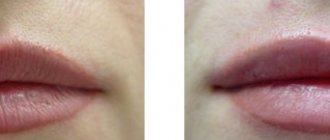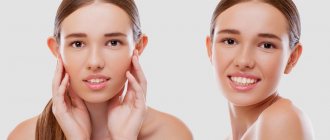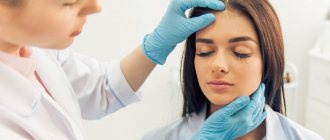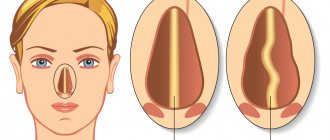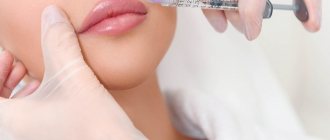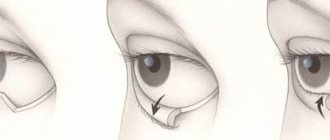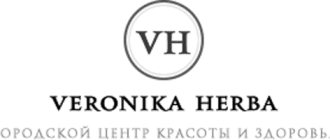Thread lifting is a highly effective modern method of rejuvenation. It is very popular due to the ease of implementation and the effectiveness of the results obtained. Many patients decide to take the step of having their face tightened with threads. However, in order for the outcome of the procedure to be pleasing, it is necessary to follow the rules of behavior and skin care for several weeks after the facelift.
The rehabilitation process takes about one and a half months on average. There are cases of earlier recovery and later. There are three periods of rehabilitation:
- Primary edema. Lasts three days. This is the reaction of the skin and underlying tissues to intervention after a circular lift. It is characterized by pronounced swelling of the tissues.
- Resorption of edema. Occurs within two weeks.
- Recovery period. Lasts about a month. At this time, the skin takes on its new appearance, becomes tightened and elastic. Recovery after thread lift surgery occurs gradually. It is necessary to carefully follow all the recommendations of doctors so that the lifting effect is formed and properly manifested.
How to care for your face after a thread lift
1-3 days after thread lifting. Home mode. Minimum physical and mental activity; it is recommended not to use facial expressions when communicating. It is best to be in a reclining position, silently read a book, draw, watch TV shows or videos without emotions. It is optimal to listen to the radio or your favorite audio recordings. You cannot touch your face, wash your face, or apply creams and ointments (except those prescribed by the doctor). You need to sleep on your back. Consume food and water warm. Food should be neutral in taste and soft in order to use a minimum of muscles when chewing it. It is better to drink water through a straw or from a sippy cup. Alcohol and smoking are strictly prohibited! Be sure not to remove the compression mask for the first three days!
4-7 days. If necessary, you can leave the house. Avoid hot food and drinks, exposure to the open sun, solarium, sauna. Do not touch your face with your hands, do not use cosmetics. Communicate without facial activity: do not laugh or smile. In the summer, be sure to wear a wide-brimmed hat or Panama hat when leaving the house. Sports, light fitness, jogging, morning exercises, any physical activity (including intimate) is prohibited. If the swelling has decreased significantly, you can wash your face using warm boiled water and a clean cotton pad using gentle, gentle blotting movements. At home, wear a compression mask and sleep in it.
8-14 days. You can eat your usual food at any temperature. Walking during periods of low solar activity returns to the daily routine. Sauna, beach and solarium, and other hot temperatures are not yet for you. Massage, cosmetics, intense physical activity, including facial expressions, are also prohibited. But you can wash your face more confidently with warm water using a cotton pad. In this case, a face that has recently been lifted should not be rubbed or squeezed. You can sleep not only on your back, but also on your side (but you shouldn’t sleep “with your head buried in the pillow” yet).
15-30 day . Return to normal daily routine. Expanding your social circle. Sleep in your favorite position, morning and evening washes. After washing, gently dry the skin by applying a soft, clean towel (preferably disposable) to it with blotting movements. It is allowed to go to work that does not require physical activity. There is no need to visit the sauna and solarium, play sports and fitness, or go on vacation to a hot country.
A month later, after the doctor’s approval, you can gradually return to your normal lifestyle.
Contraindications for thread lifting
An intervention such as a thread lifting procedure is safe and minimally invasive, but still has a number of contraindications:
- pregnancy and breastfeeding;
- exacerbation of herpes;
- skin diseases in the area of intended exposure;
- period of menstruation;
- exacerbation of chronic diseases, acute respiratory viral infections with elevated temperature and fever;
- autoimmune disorders;
- diabetes;
- severe pathologies of internal organs;
- incoagulability and other blood diseases;
- malignant neoplasms.
Contraindications such as herpes, skin diseases and ARVI are relative; after they are eliminated, lifting with Aptos threads will be possible again.
Before the procedure, you need to make sure that you are not allergic to anesthetics or components of the threads - this will also be a contraindication for a lift. You can check with allergy tests in the clinic or with an allergist.
What types of threads are there?
Threads are divided into three groups depending on how they behave in the body:
- Non-absorbable - these include APTOS threads, as well as gold, platinum and Teflon Gore-Tex threads. They contain a completely artificial material for the body that does not dissolve over time. The effect after a thread lift lasts up to ten years.
- Long-term absorbable - they are absorbed by the body for a very long time, about five years (plus/minus a year). These include Tissulift, Happy Lift, Siluet Soft.
- Absorbable - consist of completely biodegradable materials. They are dissolved by the body in just six months, but during this time they are overgrown with strong connective tissue, which acts as a frame for another three years. For example, Reande threads.
- Combined ones are made of a polypropylene base with an absorbable cone. The outer shell gradually dissolves, and in its place a capsule of connective tissue forms on top of the base. The effect of the procedure is preserved for 7 years.
What not to do after installing threads
After thread lifting, there are several strict restrictions:
- High temperatures: both external - when visiting a sauna or steam bath, solarium, beach recreation areas, and local: taking a hot shower or bath, eating, drinking. This increases swelling and prevents rapid skin recovery.
- Contact of facial skin with any objects and surfaces , including your own fingers and cosmetics. There is a high risk of skin contamination and infection.
- Washing with water irritates the skin, making swelling worse. With sudden movements and rough wiping, there is a high risk of tissue displacement and asymmetry.
- Active facial expressions, massage . You cannot sit with your chin or cheek on your hand. Any mechanical impact easily provokes displacement of the threads, causing asymmetry, which is extremely undesirable after a facelift.
- Sleeping on your stomach (and in the first days on your side) leads to increased swelling and can contribute to skin infection and displacement of the facelift threads.
- Singing lessons and visits to the dentist will have to be postponed: prolonged tension of the facial muscles can cause the threads to shift.
- Swimming, sports and fitness , intense physical activity are prohibited for a long period - they negatively affect the skin restoration process and provoke asymmetry of facial muscles.
The result of using Cog mesothreads
The main effect (and the most expected from patients) is a smooth face with a perfect oval, a clear triangle of the chin and elastic cheeks.
But that’s not all, the list of positive appearance transformations is impressive:
- Tightened chin, significantly reduced jowls (sagging cheeks);
- Reduction of nasolabial folds (so-called “puppet wrinkles”);
- Elimination of sunken cheeks, filling with volume;
- Tightening of sagging skin that has lost its tone;
- Cheek lift.
- Raising eyebrows.
Tips after inserting mesothreads with notches
Some swelling may persist for 7-14 days.
- For 2 days immediately after the injections, cold is applied to the places where the threads were inserted;
- At the same time, a tight bandage is prescribed at night;
- For up to 14 days, exclusion of physical and sports activities, fitness, inclined work, visits to saunas, baths, and taking long hot baths.
Side effects after face lift with threads
Not everyone experiences side effects after facelift surgery and go away fairly quickly. But it’s better to be aware of possible troubles and think through an action plan in advance.
Violation of facial expressions is the result of anesthesia during the insertion of threads. As a rule, it goes away after two to three hours. Some note disturbances in facial expressions lasting 3-4 days until the swelling caused by the facelift completely subsides, because the swelling itself also makes it difficult to actively move the facial muscles.
Minor effects of unevenness on the skin at the puncture site and along the placement of the threads made. The body tissues get used to the new location after facelift threads are introduced into them. By the end of the second week, they usually smooth out without any intervention.
Hypercorrection - a feeling of “tightness” of the face can also be a consequence of tissue swelling in the first days after lifting. With the disappearance of edema, the “unnatural” appearance of the face disappears.
Bruises and small bruises are the result of damage to small blood vessels after a circular facelift, which inevitably happens even with very careful punctures of the skin. Within a few days they resolve on their own, and then disappear without a trace.
But there are always negative factors in surgery:
- Painful sensations in the area of damaged tissue;
- Long recovery cycle;
- Risks of postoperative complications.
When introducing mesothreads with kogi, there is none of this. If a perfect oval face is your cherished dream, then mesothreads with Cog notches are 100% your option. It is not without reason that the appearance of technology with cogs caused a furore among foreign beauties. For the first time, cosmetology medicine offers non-surgical lifting, which in terms of results is not inferior to the work of plastic surgeons! The advantage of the new technology is that it is seamless, and the threads are installed subcutaneously, without pain, with an atraumatic needle and very quickly.
The procedure requires much fewer Cog mesothreads than classic ones, no more than four. Moreover, the first time you can put two, and after a couple of months the next two, if this is necessary to ensure a long-term result.
Complications after lifting
By the end of the second week, no skin lesions should remain. All side effects should also disappear. A little swelling is allowed, but most often the result of successful lifting is already clearly visible. A face strengthened with threads looks much younger: you can carefully take a photo and compare “before and after.” Rarely do situations arise that require doctor intervention:
- Bruising and severe swelling that persist for more than ten days. Primary rehabilitation after threads is over by this time, there should be no bruising or swelling. If they still exist, you need to visit the doctor and find out the reason.
- Allergy to material. Face threads are made from modern hypoallergenic materials. But a hypersensitivity reaction may also occur to them, albeit extremely rarely with thread lifting. Unfortunately, in this case you have to part with the threads.
- Infection. The skin becomes red and hot to the touch. Severe pain appears and the temperature rises. A course of antibiotics often helps, and threads have to be removed less often and complex therapy performed.
- A persistent violation of facial expressions indicates injury or even compression of nerve fibers. The doctor conducts an examination and removes the face lift thread that is in contact with the nerve and impeding muscle movement.
- Lumps on the face and indentations on the skin. They are usually located at the points of needle insertion and removal. Most often, the threads for a facelift are displaced due to non-compliance with the rules of behavior in the early rehabilitation period (the first two weeks). It is necessary to consult a doctor, who in most cases can cope with the bumps using a non-surgical method.
Thread lifting effect
The good thing about the thread lift procedure is that it has a complex effect: it rejuvenates the skin, removes age-related tissue sagging, and gets rid of wrinkles. The threads create a voluminous frame that supports the skin for some time and prevents age-related changes from returning. Absorbable mesothreads stimulate the synthesis of collagen and elastin - substances responsible for the freshness and youth of the skin.
Prices
| Service | price, rub. |
| Appointment with a cosmetologist (examination, drawing up a treatment plan) | 3 000 |
| Thread body rejuvenation – LuxeBody | 50 000 |
| Breast lift with LuxeBody mesothreads | from 25,000 * |
| Buttock lift using LuxeBody mesothreads | from 25,000 * |
| Thigh lift with LuxeBody mesothreads | from 25,000 * |
| Tummy tuck with LuxeBody mesothreads | from 25,000 * |
* The exact cost of the service is determined individually in consultation with a doctor
How is a thread body lift performed?
First, a certified doctor conducts a consultation and finds out the patient's wishes. He may also order an examination to identify contraindications.
If there are no restrictions for the procedure, you can begin to reinforce the body with threads.
- Markings are applied to the target area, exactly repeating the future location of the threads in the tissues. The depth of immersion and the angle of placement, the number and length of threads are taken into account. In one session, you can correct up to four zones - for example, the inner thighs and the area above the knees.
- An anesthetic cream is applied to selected areas to make the process as comfortable as possible.
- After the anesthetic takes effect, the correction areas are carefully treated with antiseptic agents. The procedure takes place under sterile conditions.
- The threads are inserted using atraumatic cannulas with a special hemostatic cut to minimize the risk of bruising. The procedure takes from 60 to 90 minutes.
- After completion of the procedure, areas of the body are treated with a special agent that accelerates skin restoration. The doctor then makes recommendations for care at home. They must be observed for 7 days.
call me back
Contraindications for body lifting with threads
Despite the complete safety of the technique and the materials used, in some cases it is worth postponing thread rejuvenation, or additionally consulting with your doctor.
Contraindications include:
- individual intolerance to drugs;
- period of pregnancy and lactation;
- exacerbation of chronic and acute viral diseases;
- tumors and neoplasms in affected areas;
- inflammatory processes on the skin;
- disruption of the immune system;
- hemophilia.
To ensure the feasibility and safety of thread body lifting, talk to our specialists and receive high-quality information support.
Sign up
